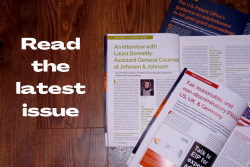This article delves into the intricate legal analysis of the doctrine of equivalence in patent infringement cases, focusing on the recent judgment in Snpc Machines Private Limited v. Mr Vishal Choudhary by the Delhi High Court.
The doctrine of equivalence plays a crucial role in patent infringement cases, especially when determining whether a product infringes upon a patented invention. While passing judgment on 5 March 2024, the Hon’ble Justice, Shri Anish Dayal, elucidated the doctrine of equivalence while granting an interim injunction in favor of the plaintiff.
The case underscores the importance of assessing infringement not solely based on the literal interpretation of claim elements but also considering the core functionality of the patented invention. Through a detailed examination of the court’s reasoning and application of the doctrine of equivalence, this article elucidates the pivotal role it plays in safeguarding patent rights and fostering innovation.
The plaintiff, Snpc Machines Private Limited, filed a suit against Mr Vishal Choudhary alleging infringement of its Indian patents No.IN 353483, IN 359114, IN 374814, and IN 385845 related to brick-making machines.
The plaintiff alleged that the defendant’s machines bear substantial similarity to theirs, leading to the filing of a patent infringement suit. The plaintiff invoked the doctrine of equivalence as the substituted element in the infringing product of that defendant’s machine was doing the same work in substantially the same way to accomplish substantially the same result as that of the plaintiff’s machine.
The defendant resisted this allegation of equivalence and asserted that, in its machine, the cabin is absent and the chassis and control of assembly from the cabin do not exist. They further asserted that electrical energy is used by the plaintiffs’ machines, whereas kinetic energy is used in the defendant’s machine. The defendant pleaded the ‘all elements rule’ as a defense, contending that their product does not replicate every element of the patented claims.
While granting an interim injunction, the Hon’ble High Court of Delhi shifted its focus from a strict application of the ‘all elements rule’ to a more nuanced analysis centered on the essence or substance of the patented invention. The court emphasized that infringement should be assessed objectively, taking into account the core functionality of the invention rather than minor variations in individual claim elements.
The doctrine of equivalence holds that a product infringes a patent if it performs substantially the same function, in the same way, to achieve substantially the same result as the patented invention, even if there are minor differences in the elements or features of the two products. In other words, if the infringing product is equivalent to the patented invention in terms of its functionality, it may still be considered infringing.
Further, the court observed that while there were differences between the plaintiff’s and defendant’s machines, such as the absence of a cabin and the use of kinetic energy, these differences did not detract from the fundamental aspects of the patented invention. For instance, both machines were designed to facilitate mobility, albeit through different mechanisms. The court concluded that these differences were integral to the core functionality of the invention and did not absolve the defendant of infringement.
This judgment provides valuable insights into the application of the doctrine of equivalence in patent infringement cases. The doctrine of equivalence serves as a critical tool in determining infringement, especially when assessing whether a product substantially mirrors the patented invention despite minor differences in claim elements. By emphasizing the core functionality of the patented invention, the court ensures that patent holders are adequately protected against infringement, thereby promoting innovation and fair competition in the marketplaces.

Written by Ajay Amitabh Suman
Patent and Trademark Attorney, United & United
You may also like…
Pravin Anand conferred with the APAA Enduring Impact Award
Pre-eminent IP Lawyer and Managing Partner of Anand and Anand, Mr Pravin Anand, has been conferred with the...
The quiet power of confidentiality clubs in SEP litigation
In standard essential patent (SEP) disputes, especially those involving FRAND (Fair, Reasonable, and...
A $10 million patent win reduced to a $1 lesson in damages
In a decision that will resonate as a stark warning to patent litigants, the US Court of Appeals for the Federal...
Contact us to write for out Newsletter














